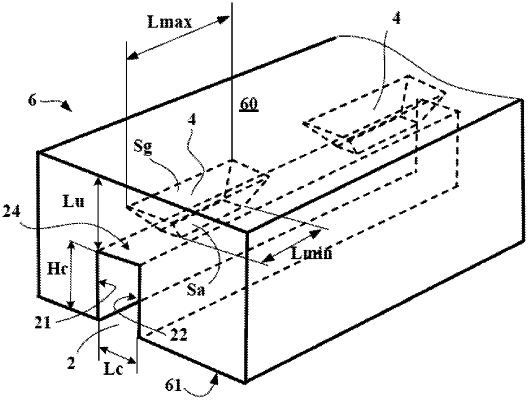| CPC B60C 11/0323 (2013.01) [B60C 2011/0381 (2013.01); B60C 2200/06 (2013.01)] | 13 Claims |

|
1. A tread for a heavy-duty vehicle tire, having a tread surface when new and which contacts a road surface when running, the tread comprising:
a first volume of cavities which open onto the tread surface when new;
a second volume of cavities formed entirely under the tread surface which contacts the road surface when new, said second volume of cavities comprising at least one channel of height Hc delimited by two main walls which are spaced apart from one another by a width Lc and which are connected together by a lower part forming a bottom and by an upper part which continues the two main walls radially towards an outside of the tire, and said channel forming, after partial wear corresponding to a thickness Lu, an additional groove which opens onto the tread surface;
wherein each channel comprises a plurality of extensions forming cavities, each extension of the plurality of extensions extending parallel to said channel and extending between said channel and the tread surface over a height He at least equal to 20% and at most equal to 75% of a thickness of material Lu between the upper part of the channel and the tread surface when new, and each extension of the plurality of extensions opening at least into the upper part of the channel through an opening having a cross-sectional area Sa at least equal to 0.8*(Hc*Lc); and
wherein a cross section of each extension as said extension opens onto the tread surface after partial wear of the tread surface decreases in a direction toward the cross section Sa.
|